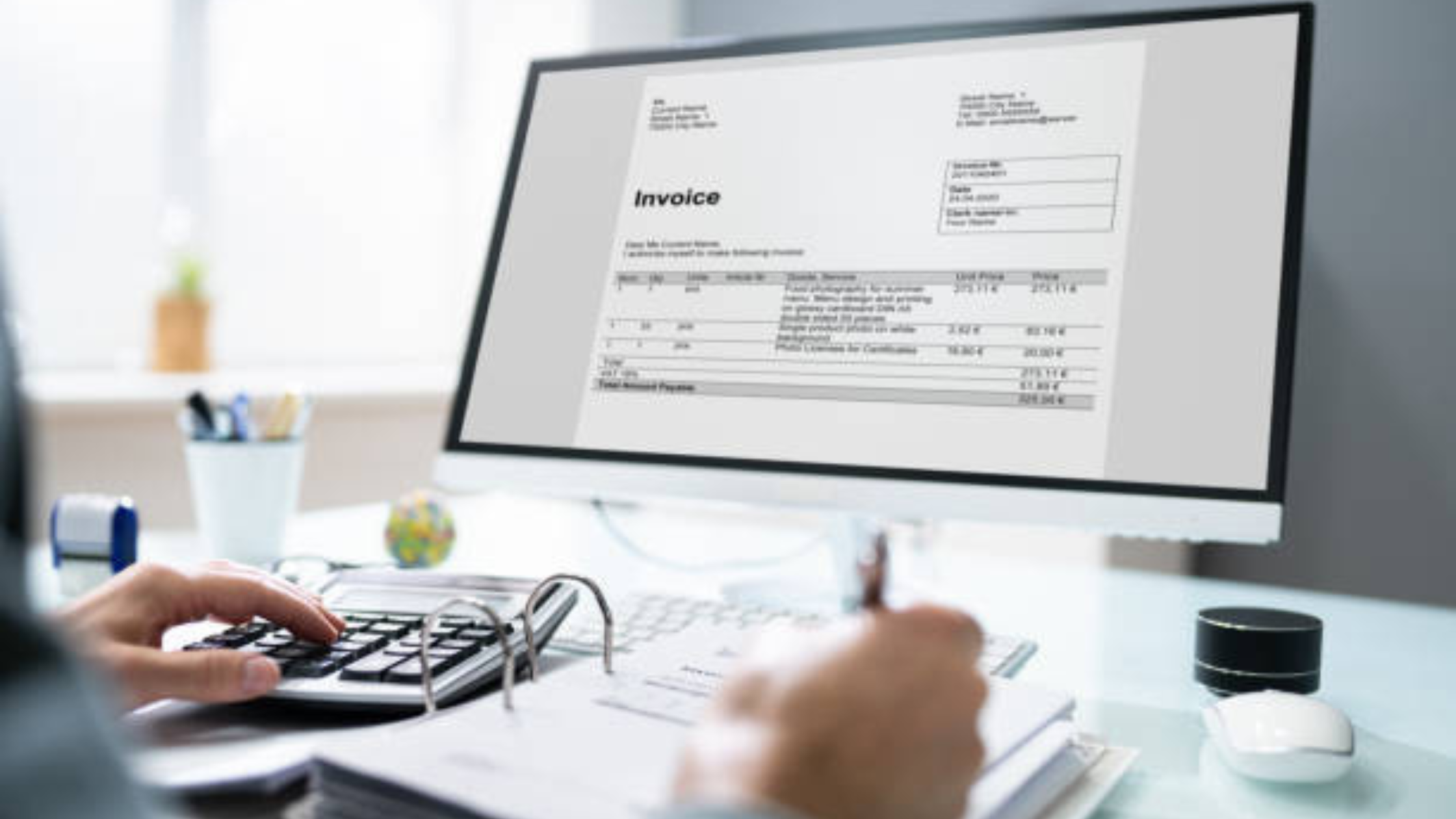5 Easy Steps to Create Recharge Receipts Online

Creating Recharge Receipts Online: A Step-by-Step Guide
Creating recharge receipts online has become an essential task for businesses seeking convenience and efficiency. This guide will walk you through five simple steps to effortlessly generate recharge receipts in a hassle-free manner. From selecting the right online platform to customizing templates and entering relevant information, this process is designed to streamline your receipt creation process. Whether you are a small business owner or a freelancer looking to enhance your professionalism, mastering the art of online recharge receipts can significantly boost your organization's credibility and operational effectiveness. By following these steps, you can save time, reduce errors, and ensure that your receipts reflect your brand identity. Get ready to revolutionize your receipt management system and elevate your business practices with these five easy steps to create recharge receipts online.
Step 1: Selecting a Reliable Online Platform
Researching and Choosing a Trustworthy Website for Creating Recharge Receipts
The need for creating recharge receipts online has become essential for businesses and individuals alike. Whether you are a small business owner, a freelancer, or someone who frequently needs to issue recharge receipts, finding a reliable online platform to assist you in this process is crucial.
Importance of Reliable Platforms
Selecting a reliable online platform for creating recharge receipts is not just about convenience but also about ensuring the security and professionalism of your transactions. It is essential to choose a platform that not only meets your immediate needs but also grows with your business.
Considerations When Choosing a Platform
User-Friendly Interface : Look for platforms that offer a user-friendly interface, making it easy for you to navigate and create receipts efficiently. A simple and intuitive design can save you time and reduce the chances of errors.
Customization Options : Choose a platform that provides customization options for your receipts, allowing you to add your logo, company name, and other relevant details. Personalizing your receipts can help strengthen your brand identity.
Security Measures : Ensure that the online platform follows strict security measures to protect your data and sensitive information. Look for features like data encryption and secure payment gateways.
Templates and Designs : Check if the platform offers a variety of templates and designs for your receipts, allowing you to create professional-looking documents. Having access to different styles can help you tailor your receipts to suit different occasions or purposes.
Customer Support : Opt for a platform that provides reliable customer support to address any queries or issues that may arise during the receipt creation process. Responsive customer service can save you from potential headaches and delays.
Additional Tips for Selecting a Platform
Integration Capabilities : Consider platforms that integrate with other tools or software you use in your business operations. Seamless integration can streamline your workflow and improve efficiency.
Mobile Accessibility : Choose a platform that offers mobile accessibility, allowing you to create or access your receipts on the go. This flexibility is particularly useful for individuals who travel frequently or have remote work setups.
Cost-Effectiveness : Evaluate the pricing plans of different platforms and choose one that offers a balance between features and affordability. Avoid overpaying for services you may not fully utilize.
Conclusion
By following these expanded guidelines and conducting thorough research, you can select a reliable online platform that meets your needs and helps you create recharge receipts with ease. Remember, the right platform can streamline your invoicing process and enhance the overall efficiency of your business operations.
Step 2: Input Transaction Details
When it comes to making financial transactions, accuracy and attention to detail play a crucial role in ensuring a seamless process. In this step, users are required to input essential transaction information to successfully complete the process. Let's delve deeper into the key elements that need to be considered:.
Transaction Date: The transaction date holds significant importance as it serves as a timestamp for the financial activity. Users must input the exact date when the transaction occurred to maintain accurate records and for future reference.
Transaction Amount: Accuracy in entering the transaction amount is paramount. Users should double-check the figures to avoid any discrepancies. It is advisable to verify the amount before proceeding to the next step to prevent any errors in processing.
Reference Number: Including a reference number, if applicable, can provide additional clarity and traceability to the transaction. This unique identifier helps in tracking the transaction and associating it with the relevant account or purpose. Users should ensure that the reference number, if provided, is correctly entered to facilitate smooth processing.
Additional Information: Apart from the essential details mentioned above, users may be required to provide additional information depending on the nature of the transaction. This could include specific instructions, billing details, or any other relevant data that aids in processing the transaction efficiently.
In the digital age, inputting transaction details accurately is not only essential for record-keeping but also for security purposes. Ensuring that the provided information is correct helps in preventing fraudulent activities and unauthorized transactions. Moreover, accurate transaction details are crucial for reconciling accounts and identifying any discrepancies that may arise.
When entering the transaction date, users should be mindful of any timezone differences, especially in cases of international transactions. This attention to detail can prevent confusion and ensure that the transaction is processed in a timely manner without any delays.
For the transaction amount, users should not only verify the numerical value but also confirm the currency used. Different currencies or incorrect amounts can lead to misunderstandings and complications during the transaction process.
The reference number serves as a unique identifier that aids in tracking the transaction's progress and resolving any issues that may arise. It is important to keep a record of the reference number for future inquiries or disputes regarding the transaction.
By meticulously inputting these transaction details and any additional information with precision, users can expedite the processing time and minimize the chances of errors or delays. Attention to detail and accuracy are key principles to follow in this step to ensure a successful and hassle-free transaction experience.
Remember, every detail counts when it comes to financial transactions. By carefully inputting the transaction details, users contribute to a secure and efficient process that benefits all parties involved. Taking the time to input accurate information not only streamlines the transaction process but also builds trust and confidence between the transacting parties.
Step 3: Customize Receipt Template
Elevate Your Branding with a Personalized Receipt
Every interaction with your customers is a chance to make a lasting impression. Customizing your receipt template goes beyond just documenting transactions; it's a powerful branding tool that can enhance customer loyalty and reinforce your brand identity. Let's delve deeper into the key strategies for personalizing your receipt template:.
Showcase Your Company Logo: Your company logo is the face of your brand. Incorporate it prominently at the top of your receipts to create a strong visual association with your business. A well-designed logo not only adds professionalism but also builds brand recognition.
Brand Colors for Visual Cohesion: Infuse your receipt with your brand's color scheme to create a cohesive and visually appealing document. Consistent use of brand colors not only reinforces brand recognition but also helps in creating a sense of familiarity with your customers.
Choose Fonts Wisely: Opt for fonts that align with your brand's personality and style guide. Ensure that the fonts used are legible for receipt details, and consider using different font styles or sizes to emphasize important information.
Essential Contact Details: Include crucial contact information on your receipts, such as your company's physical address, phone number, and email address. Providing this information not only adds legitimacy but also makes it convenient for customers to reach out to you.
Personalized Thank You Notes: Tailor the thank you message on your receipts to express genuine appreciation to your customers. A personalized touch, such as 'Thank you for choosing us,' can go a long way in building customer loyalty and creating a memorable experience.
Special Offers or Promotions: Consider including special offers or promotions on your receipts to encourage repeat business. This can entice customers to return and make additional purchases, fostering a sense of loyalty.
By customizing your receipt template thoughtfully, you not only establish a professional image for your business but also create a memorable experience for your customers. Remember, every receipt is an opportunity to reinforce your brand values and strengthen your relationship with your clientele.
Step 4: Review and Edit
Double-Checking for Accuracy
Once you have completed the writing phase of your project, it's time to shift your focus to reviewing and editing. This step is crucial in ensuring that your content is polished, error-free, and effectively conveys your message. Here are some key points to keep in mind during the review and edit process:.
Spelling and Grammar
- Check for any spelling or grammatical errors. Use a spell checker tool or consider having someone else proofread your work.
Clarity and Coherence
- Make sure that your content is clear, concise, and coherent. Ensure that your ideas flow logically and that your arguments are well-supported.
Consistency
- Check for consistency in formatting, style, and tone throughout your content. Make sure that headings, fonts, and other elements are uniform.
Fact-Checking
- Verify the accuracy of any facts, statistics, or references included in your content. Ensure that information is up-to-date and properly sourced.
Audience Relevance
- Consider your target audience and ensure that your content is relevant and engaging to them. Tailor your language and examples to resonate with your readers.
Formatting and Layout
- Pay attention to the overall formatting and layout of your content. Use headings, bullet points, and other formatting tools to enhance readability.
Final Proofread
- Before finalizing your work, perform one last proofread to catch any remaining errors or inconsistencies.
Peer Review
- Consider seeking feedback from a peer or colleague. A fresh set of eyes can often catch errors or provide valuable insights.
Read Aloud
- Reading your content aloud can help identify awkward phrasing or areas that may need improvement. Listen for flow and coherence in your writing.
Check for Citations
- Ensure that all sources are properly cited and credited. Check formatting for in-text citations and reference lists.
Consider Feedback
- If you've received feedback on earlier drafts, take the time to address any concerns or suggestions. Use feedback as a tool for improvement.
Take Breaks
- Don't rush the editing process. Take breaks between editing sessions to maintain focus and a fresh perspective.
By diligently reviewing and editing your content using these additional steps, you can elevate its quality and impact. Remember, the editing process is an essential part of writing and can make a significant difference in the final product.
Step 5: Download or Email Receipt
Downloading a Copy
After completing your purchase, it's important to decide whether to download a copy of the receipt for your records. This step is crucial for maintaining an organized record of your expenses and can be helpful for any future returns or warranty claims. Many online platforms offer the option to download receipts in a PDF format, making it convenient to save or print as needed.
Emailing the Receipt
Another option is to email the receipt directly to the recipient. This method is particularly useful when the purchase is on someone else's behalf or when the recipient requires a digital copy for reimbursement or accounting purposes. When sending a receipt via email, double-check the recipient's email address for accuracy and include any pertinent details or order numbers in the email body.
Deciding whether to download or email the receipt depends on individual preferences and specific requirements. Some factors to consider include ease of access, storage preferences, and the recipient's needs. Regardless of your choice, ensure that the receipt is stored securely for future reference.
Importance of Receipts
Receipts serve as proof of purchase and are essential for returns, exchanges, or warranty claims. Keeping receipts organized can also aid in budgeting and tracking expenses. In addition to digital copies, consider maintaining physical copies for backup in case of technical issues or disputes.
Record-Keeping Tips
To maintain an effective record-keeping system, consider organizing receipts by date, category, or vendor. Utilizing digital tools like expense tracking apps can streamline this process and provide insights into spending habits. Regularly reviewing and updating your records can help identify any discrepancies or unauthorized charges promptly.
Security Measures
When storing digital receipts, prioritize security to protect sensitive information. Use secure cloud storage or encrypted files to safeguard personal and financial data. Be cautious with sharing receipts via email and avoid including full payment details unless necessary.
Benefits of Organizing Receipts
Organizing receipts not only helps in tracking expenses but also aids in budget planning and financial management. By categorizing receipts based on their purpose or date, individuals can gain a better understanding of their spending patterns and identify areas where they can potentially save money. Moreover, organized receipts simplify tax preparation by providing a clear overview of deductible expenses and supporting documentation.
Environment-Friendly Practices
Opting for digital receipts over printed ones contributes to environmental sustainability. By reducing paper usage, individuals can minimize their carbon footprint and support eco-friendly initiatives. Additionally, digital receipts eliminate the need for physical storage space, promoting a clutter-free and sustainable lifestyle.
Receipts for Business Purposes
For business owners or freelancers, maintaining accurate and organized receipts is crucial for tax compliance and financial transparency. Utilizing accounting software or specialized receipt management tools can streamline the process of tracking business expenses and generating financial reports. Keeping detailed records of business-related receipts not only simplifies auditing procedures but also ensures that all deductible expenses are accounted for.
The decision to download or email a receipt depends on individual preferences and circumstances. Whether opting for digital copies or sharing receipts electronically, the key is to prioritize organization, security, and efficiency in managing financial documentation. By adopting effective record-keeping practices and leveraging digital tools, individuals can simplify expense tracking, budgeting, and financial planning processes for enhanced financial well-being.
Conclusion
Creating recharge receipts online can be a streamlined process by following these five easy steps. By utilizing online tools and templates, businesses can efficiently generate professional-looking receipts, save time, and enhance customer satisfaction. Embracing technology and automation in this aspect of business operations can lead to increased efficiency and accuracy, ultimately benefiting both the business and its clients.







